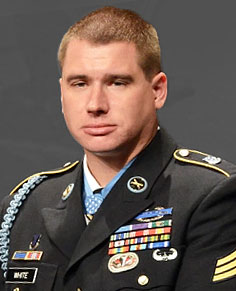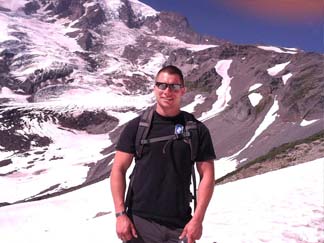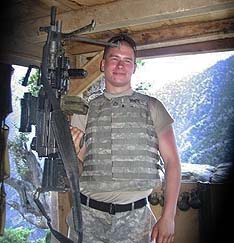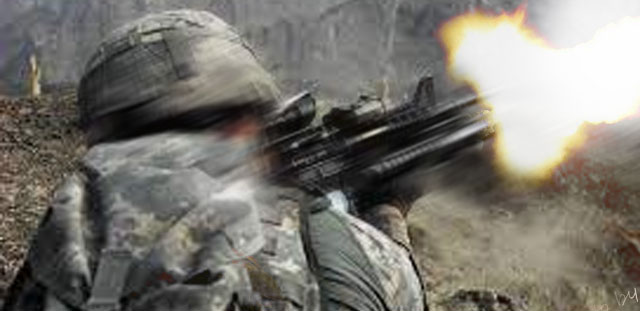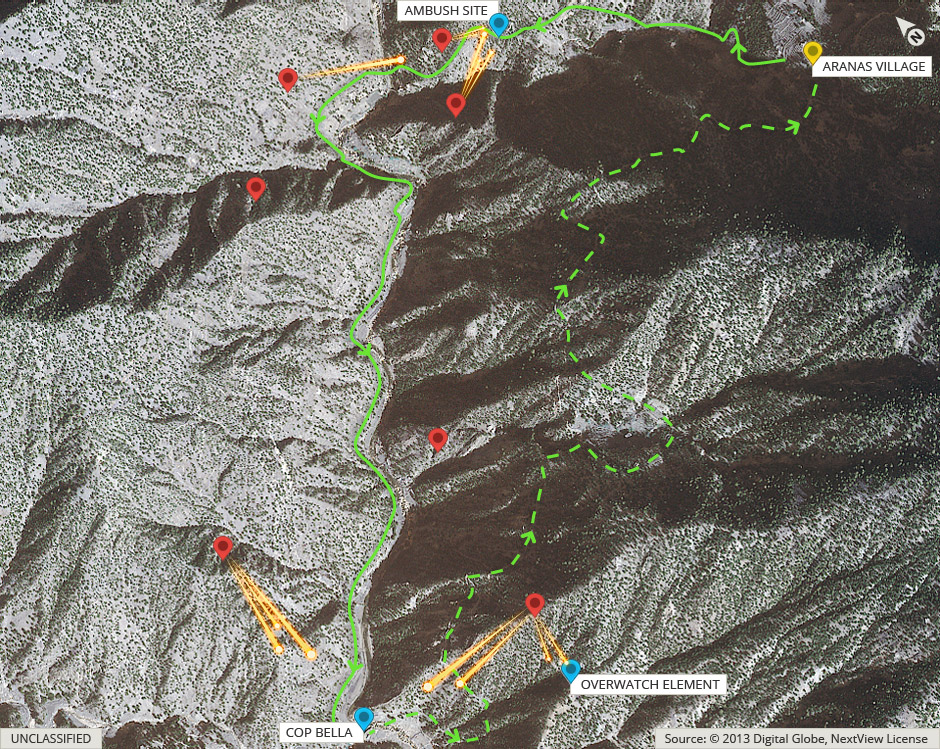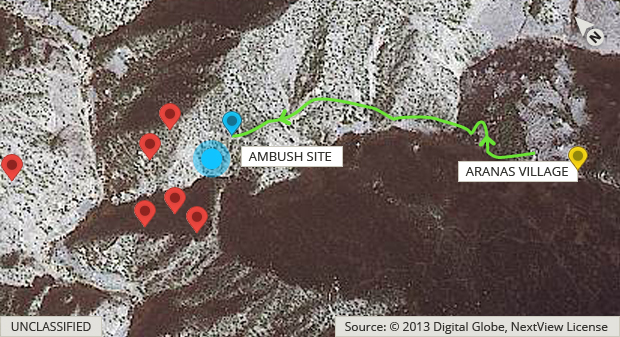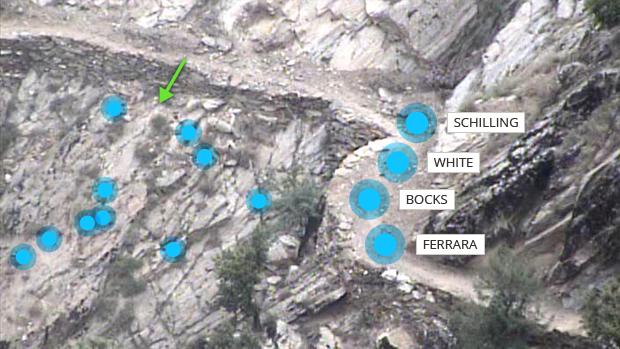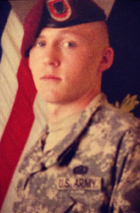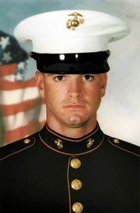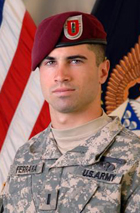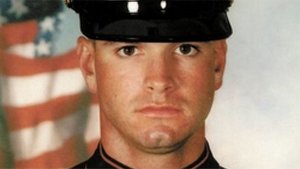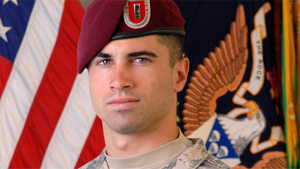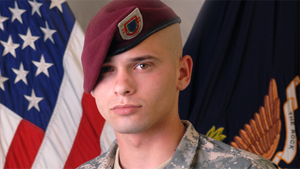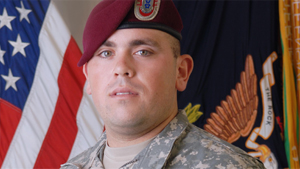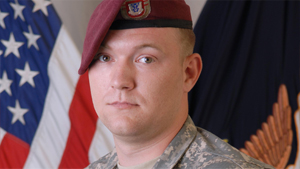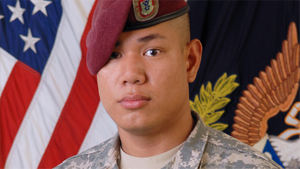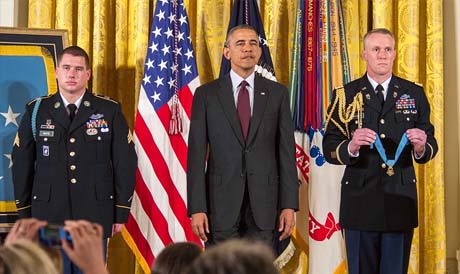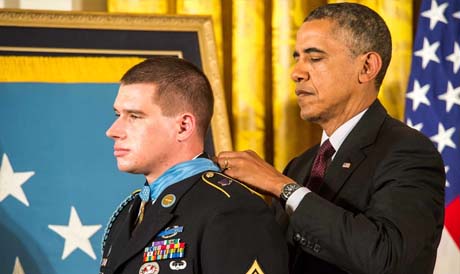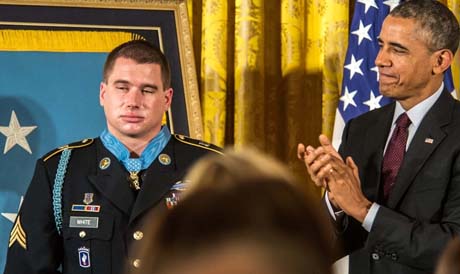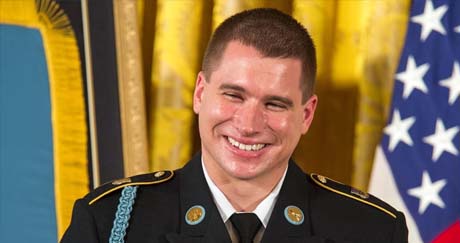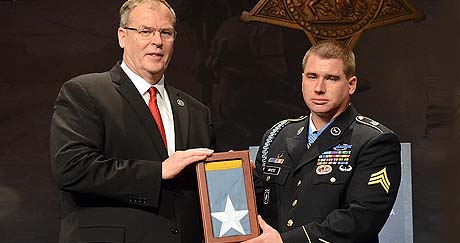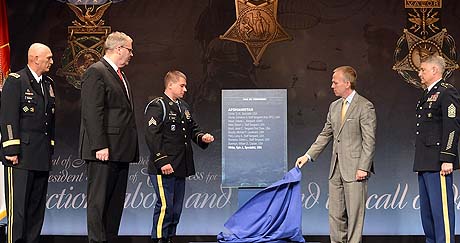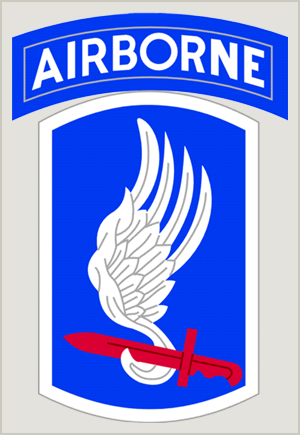
The shoulder patch insignia of the 173rd Airborne Brigade
173RD AIRBORNE BRIGADE COMBAT TEAM
Sky Soldiers continue the distinction of honored service dating back to World War I and proudly represent the Airborne fighting spirit wherever they serve. The 173rd Airborne Brigade was constituted in 1917 as an infantry brigade and deployed to France in 1918 as part of the 87th Division. Returning to the United States the brigade was demobilized in 1919.
Read Full Unit History
On Nov. 8, 2007, members of 1st Platoon, Chosen Company, 2nd Battalion (Airborne), 503rd Infantry Regiment, 173rd Airborne Brigade, headquartered at Combat Outpost Bella, prepared for movement to the village of Aranas, Afghanistan, for a Shura meeting with village elders. There had been little communication with the village after their suspected collusion on a major attack months earlier on Combat Outpost Ranch House - a former American post situated on the mountain overlooking the large village, that resulted in eleven wounded and the closure of the out-post.
Moving under cover of darkness, the 14 Americans and approximately one squad of Afghan National Army, or ANA, soldiers, made for the American-built schoolhouse in the heart of the village, where they would bunk for the night.
Upon daybreak, the Americans and their ANA counterparts prepared for the meeting at the mosque. The villagers delayed the meeting - saying the elders were praying - for several hours until finally beginning in the afternoon, around 1- 1:30 p.m.
Villager turnout for the Shura was unusually large. There were more questions and villager engagement than the Americans had experienced in the past. At first, team members were hopeful about the level of interest from the village males. Then, the Marine Embedded Training Team member, Sgt. Phillip A. Bocks, alerted leadership that his interpreter was hearing radio chatter in a language he didn’t recognize. Bocks advised the platoon leader, then-1st Lt. Matthew C. Ferrara, it was best to leave immediately.
Several villagers followed the unit on their ten to twenty minute trek up the mountain to the shallow mountain–side trail back to Combat Outpost Bella. No sooner did the followers break-off to the ridge above, did the ridgelines echo with accurate small arms fire. The enemy initiated a three-pronged attack, simultaneously hitting the patrol from Aranas, the scouts providing over watch of the patrol on the ridge to the southeast, and their home – Combat Outpost Bella.
Members of 1st Platoon, Chosen Company, 2nd Battalion (Airborne), 503rd Infantry Regiment, 173rd Airborne Brigade gather for a ceremony in Nuristan Province, Afghanistan, Nov. 6, 2007.
Carrying a fully-automatic M4A1 rifle, Spc. Kyle White emptied his magazine in the direction of suspected and known enemy targets. After White dropped his magazine and clicked the next 30-round magazine into his weapon, an enemy rocket propelled grenade detonated near his location, knocking him unconscious.
As White awoke, an enemy round fragmented near his head sending shrapnel into his face. The forward observer, Spc. Kain Schilling, White, Ferrara, Bocks and the interpreter were now cut-off from the rest of the patrol, whose members had been forced to slide down the cliff to the ground, 50-meters below and 150 meters to the west. White relayed a situation report to Staff Sgt. Conrad Begaye, who was part of the element that had jumped down the cliff.
White made an assessment of the situation and saw that Schilling had been shot in the arm. He moved to Schilling and applied a tourniquet to the arm, which stopped the bleeding. White dropped his pack and realized his radio was now hit and not operational. Schilling’s and White’s only concealment came from the loose canopy of a single tree jutting up from the side of the cliff below them. The tree provided just enough shade to make the two Americans difficult targets for accurate enemy fire.
”It's just a matter of time before I'm dead. I figured, if that's going to happen, I might as well help someone while I can.”
- Sergeant Kyle J. White, Medal of Honor recipient
White now noticed that Bocks was badly wounded – in the open – about 10 meters away from his location to the east. He yelled to Bocks to use all his strength and to crawl to his position. Bocks tried, but his wounds were too severe to make any progress. White sprinted across the 10-meter expanse, with enemy rounds ricocheting around his feet and snapping past his head. White reached Bock’s and yelled to the interpreter to go and treat Schilling. The interpreter’s attempts to move to Schilling were met with enemy fire, so he stayed at his location.
White began to drag Bocks in the direction of Schilling’s location. He realized the enemy fire was now concentrated on him, which was further endangering Bocks, so he sprinted back to the relative concealment of the tree canopy momentarily to draw their fire away from Bocks. White moved back to Bocks, dragged him a little further - until the enemy fire was too concentrated- and then moved back to the relative shade of the tree. He did the sprint and drag several times, before finally getting Bocks to a more protected location. White applied a tourniquet to the Marine’s leg and treated him until he succumbed to his wounds.

